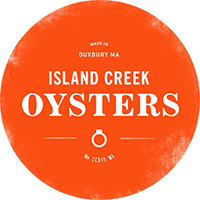Sun’s out, air’s fresh, the water’s warm. The Summer accepts no excuses from those who sit inside and lament boredom. The Summer reserves no sympathy for those who decline the open invitation to partake in all of the magnificent festivities the season has to offer. A little lint ball of a town in the winter, Duxbury’s good side (#selfie) is summer. Though there are only a few beach days left this summer, let me introduce you to your favorite new hobby – Foraging. There is a bounty of interesting sea creatures to be gathered on New England’s ragged coastline. Here is a know-nothing’s guide to coastal foraging at any tide.
High Tide: Sea Beans
Skill level: Cabin Boy
A treat that any pram-handler can forage for! Sea beans are a type of succulent that grows in knobby, green bursts on salt marshes and beaches, making them accessible at high tide – no waders needed. They taste like salty asparagus and you can eat them raw. But the best part about sea beans? They fix, or take in, carbon dioxide from the atmosphere more efficiently than other plants. Cool science.
Mid Tide: Chondrus Crispus
Skill level: First Mate
This lacy, edible seaweed is only in season during the warm summer months. As water temperatures rise throughout the season, the cream and brown colored algae darkens in hue, becoming gorgeous shades of deep purple and green. It’s like chewy rubber that tastes exactly how you imagine it would, plus a hefty hit of salt on your tongue. Steam with bluefish and soy sauce…sprinkle on top of a salad.
Low Tide: Periwinkles
Skill level: Ship’s Captain
Periwinkles – the escargot of the sea. Until recently, I wouldn’t have thought twice about harvesting periwinkles, let alone putting them anywhere near my face. But on a recent camping trip to Maine, I found myself quite hungry. Having not brought enough provisions on this weekend-long romp in the middle of nowhere, by the last night my food options were slim- half a handle of dark rum or wild periwinkles. I decided to save the rum and try my hand at foraging. We were camped on a small island ringed with large rocks slick with rockweed and encrusted with thousands of marble-sized periwinkles, only exposed at low tide. As the tide inched out, I crawled over the damp, glistening rocks, sweeping my hand underneath and in between the dark gaps, uprooting the little snails and placing them in the pot I would cook them in. Next, I steamed them in an inch of seawater for just a few minutes, much like lobsters and clams. To remove the meat, you just need a toothpick or pairing knife to pluck the steamed creature from its shell. And believe it or not, they taste pretty good. I was even able to get my hoard of drunken friends to enjoy them with me. All I had with me to dress my dinner up was a greasy bottle of Cholula Hot Sauce. But I can only imagine how awesome they would be sautéed butter with white wine and garlic. Periwinkles might seem beneath us, peasant food. But perhaps what makes eating them so rewarding, is that they make themselves available only to those who beg, get down in the mud and salt, and dig. I think we can all learn a little something from that, wouldn’t you say?
★ Michelle Wong is the newest and shortest member of the ICO sales team. She enjoys spending time on Nantucket and playing flip cup with wine. ★



